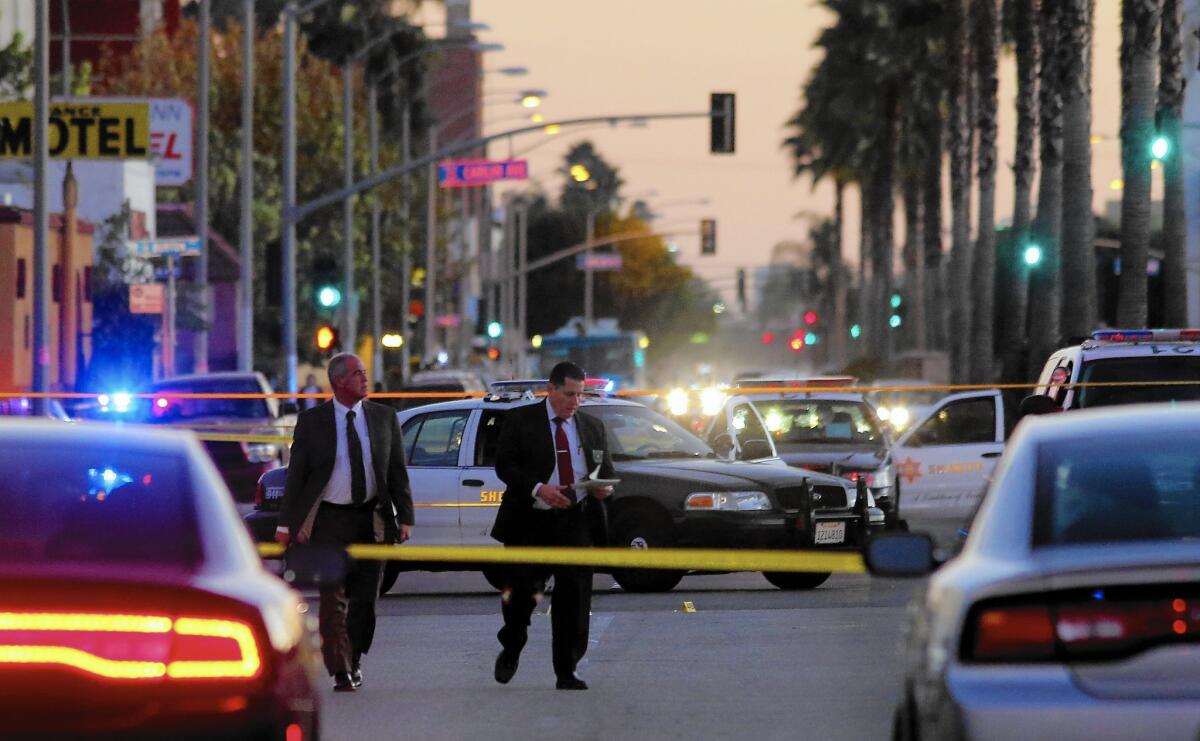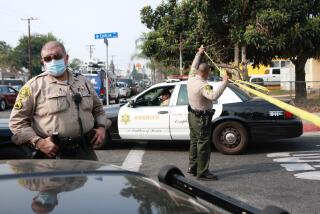Were deputies justified in using deadly force in Lynwood shooting?

This weekend’s fatal shooting of Nicholas Robertson by two Los Angeles County sheriff’s deputies re-energized the ongoing national debate about how law enforcement officers use deadly force. A video of the incident obtained by KTLA sparked local protests and generated national attention.
In the 29-second video, a sheriff’s deputy follows Robertson as he appears to be walking away from the deputy. The recording shows deputies repeatedly firing at him, even after he fell to the ground.
The Sheriff’s Department said the man had fired shots into the air and pointed the weapon at the deputies before they opened fire. Video and images released by the department show Robertson on the ground outside a Lynwood gas station, crawling away from the deputies with what appeared to be a gun in his hand.
Two policing experts weighed in on the training that officers receive for such scenarios.
Why shoot a man who was moving away from the deputies?
Law enforcement officers are trained to shoot when they perceive a threat to themselves or others. Geoffrey Alpert, a criminology professor at the University of South Carolina, said several factors can influence whether an officer believes that threat exists, including the suspect’s prior behavior, body language and what the officer learns about the person before arriving at the scene.
Alpert cautioned that the Lynwood shooting was not a “clear-cut good or bad shooting because of all these different factors.” If the deputies believed Robertson had fired the gun earlier, Alpert said, it could have influenced their perception about whether he was a threat while he was walking and then crawling with the weapon.
“The officer’s perspective is important. Knowing he shot a couple rounds before, is he really just crawling away? Is he turning back and looking?” Alpert said. “If he’s turning back and looking, that may be an indication to a cop that he’s getting ready to shoot.”
MORE: Get our best stories in your Facebook feed >>
Why not shoot the gun out of his hand or shoot him in the leg to wound him?
“People are forming their opinions on what they watch on TV,” retired sheriff’s Cmdr. Sid Heal said, chuckling. “I don’t even know how to respond to that. I wish it was possible.”
Officers don’t always hit their targets, Heal and Alpert said. Shooting at a gun range is one thing, they said, but officers are under a lot more pressure in the field that can result in misses. Aiming for a hand or foot increases the likelihood that an officer could miss his or her target.
Stray bullets can pepper cars or nearby homes, Heal said, and put bystanders at risk.
“We’re just not very good shots and stress makes it worse,” Heal said. “If you miss, the consequences are pretty devastating.”
What about less-lethal options, such as a Taser or bean-bag shotgun?
Using a Taser or bean-bag shotgun requires coordination and communication between officers, Alpert said. “It’s not something you do on a whim.” Even if an officer uses a Taser against someone, he said, another officer will probably have his or her gun drawn as a backup in case something goes wrong during a rapidly evolving situation.
“You can’t just say, ‘It didn’t work, let me put my Taser away and pull out my firearm,’” he said. “You have to have someone there ready to use lethal force if the other doesn’t work.”
The consequences of not being prepared could be deadly, Heal said.
“Nonlethal weapons are primitive,” Heal said. “We don’t have a nonlethal option that will provide adequate protection against lethal force yet.”
Twitter: @katemather
ALSO
Los Angeles Mayor Garcetti announces support for higher water rates
L.A. lawmaker has ‘sticker shock’ over possible staffing costs for LAPD body cameras
LAPD officer found not guilty of assaulting man with baton
More to Read
Start your day right
Sign up for Essential California for news, features and recommendations from the L.A. Times and beyond in your inbox six days a week.
You may occasionally receive promotional content from the Los Angeles Times.






